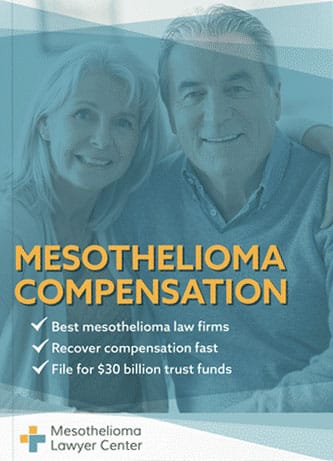H.K. Porter, Inc. was once the third-largest manufacturer of locomotives in the U.S. and also the principal builder of small train engines for industrial use. The company used asbestos in parts and products for many years, leading to exposure and illness in some workers. H.K. Porter faced lawsuits over asbestos and eventually filed for bankruptcy.
Keep in mind that if you or a loved one have been injured by asbestos, you may qualify for considerable compensation. With more than $30 billion available right now in asbestos trust, now is the time to take the first steps in determining what you may be entitled to. Fill out our form to get a free Financial Compensation Packet. You’ll learn about the experienced mesothelioma lawyers in your area, how to get paid in 90 days, how to file a claim for the asbestos trust funds, and more.


FREE Financial Compensation Packet
- Info on law firms that will recover your HIGHEST COMPENSATION
- Learn how to get paid in 90 days
- File for your share of $30 billion in trust funds

Did H.K. Porter Use Asbestos?
Asbestos was long prized in many industries for its insulating properties, abundance, and affordability. H.K. Porter is one of many companies that used asbestos in its processes and products for decades.
Asbestos was an important material in the locomotives and components H.K. Porter made. These parts had to withstand high heat and protect against fire. In addition to its own products, H.K. Porter acquired several companies that also used asbestos.
H.K. Porter, Inc. History
Founded in 1866 in Pittsburgh, Pennsylvania, H.K. Porter, Inc. was created when two businessmen opened a small shop and started repairing and machining industrial equipment. The original name of the company was Smith & Porter.
- The two founders, Henry K. Porter and John Y. Smith, built their first industrial locomotive for the New Castle Railroad & Mining Company within a year of opening. The company would become a significant player in the railroad industry.
- The name of the company changed to H.K. Porter & Company in 1878 and H.K. Porter Company in 1899.
- Porter specialized in small light-duty and steam switchers rather than large passenger or freight locomotives, starting with a 42-inch, narrow gauge, 0-4-0T design.
- From 1867 to 1950, the company built around 8,000 locomotives for customers in various industries, including small railroad lines and mining enterprises. It manufactured engines and boilers for locomotives.
- Initially, Porter was technologically innovative; it made compressed air-powered engines for mining companies because steam engines caused explosions in coal mines. Later, Porter pioneered fireless locomotives that used pressurized hot water and steam to power pistons and rods.
- H.K. Porter made the first gas-powered engine and locomotive in 1911. It created engines that could replace traditional boilers in locomotives.
- Porter began to struggle in the 1930s as trucks became more prevalent in the transportation of goods. It made its last locomotive in 1950.
- World War II was a turning point for H.K. Porter, as was new ownership at the time. The government needed machines and tools that Porter provided. In addition to new business for these products, Porter grew by acquiring other companies.
- Throughout H.K. Porter’s seven decades as a locomotive maker, the company used large amounts of asbestos products to protect machinery and moving parts from the effects of heat and friction.
How Did H.K. Porter Use Asbestos?
There is no comprehensive list of Porter-made products that contain asbestos. However, the company manufactured and sold a large selection of items during its prime as a major business enterprise, including:
- Locomotives
- Gaskets
- Steam pipes
- Water tanks for steam engines
- Pistons and rods
- Asbestos cloth
- Steam valves
- Boilers
- Brakes and brake pads
Even though H.K. Porter stopped manufacturing its small industrial locomotives over 60 years ago, several hundred of these long-lasting trains still operate in various countries, particularly in Africa, Latin America, and Europe.
In addition to its locomotive and locomotive parts that contained asbestos, H.K. Porter acquired several companies that also used asbestos:
- Asbestos Manufacturing Company
- Carolina Asbestos Company
- LaClede Christy Company
- Russell Manufacturing Company
- Southern Asbestos Company
- Southern Textile Company
- Thermoid Corporation
Which Workers Were Affected By H.K. Porter Asbestos Products?
Since the company’s various incarnations were primarily in business when asbestos use was unrestricted, workers in a wide array of occupations were negatively affected.
Porter employees were most at risk between 1867 and the early 1980s. This was when the company made and sold its locomotives and other industrial products using asbestos-containing materials.
In addition, people who worked for the companies that bought Porter products were also exposed to asbestos:
- Factory workers
- Insulators
- Metalworkers
- Engineers
- Boilermakers
- Railroad workers
- Miners
- Sugar plantation workers
- Shipyard workers
- Canal company workers
Locomotives and their parts were long the primary focus of H.K. Porter, and many railroad workers were affected. These workers removed, handled, or even repaired asbestos components that stirred up harmful asbestos fibers. They were at high risk for asbestos illnesses.
A study of several high-risk occupations published in 2018 found that railroad workers had a very high risk of asbestos illnesses. They ranked highest among the eight groups. On average, these workers developed markers for asbestos illnesses 30 years after exposure on the job.
H.K. Porter, Inc. Lawsuits
H.K. Porter faced its first asbestos lawsuits in the 1980s. Over several years, the company faced close to 2,000 individual asbestos-related cases each month.
In an attempt to recoup at least a portion of the $30 million it had paid to fight and settle so many lawsuits, Porter sued its insurer, Pennsylvania Insurance Guaranty Association (PIGA), in 1993.
PIad refused to become involved in Porter’s asbestos litigation and did not want to pay the $15 million the company requested.
PIGA won the original case in district court. However, the U.S. Circuit Court of Appeals for the Third District overruled that decision in 1996 and ordered PIGA to pay Porter part of the $15 million.
Also in 1993, H.K. Porter was on a list of six co-defendants in Adams Public School District v Asbestos Corporation, Inc.
In this case, a school district in North Dakota argued that Porter and other asbestos product manufacturers were responsible for asbestos in their school buildings.
The asbestos companies won the case in a Pennsylvania district court but lost on appeal.
The H.K. Porter Asbestos Trust Fund
As with many large companies that made, distributed, or sold asbestos products in the U.S., H.K. Porter set up a trust fund to pay compensation to victims of asbestos exposure or their survivors.
The trust fund was set up in 2008 after the company emerged from bankruptcy. Porter’s trust fund is worth an estimated $104 million.
What to Do if You Were Exposed to H.K. Porter Asbestos Products
If you worked for H.K. Porter or with its asbestos products, you could be at risk for asbestos illnesses. Talk to a mesothelioma lawyer about your legal rights and options. They can help you make an asbestos trust fund claim or take other legal actions to seek compensation.
Additional Resources and Legal Information for Asbestos Victims
Remember, if you or someone you love suffer from mesothelioma, asbestosis, or asbestos-related lung cancer, there is a good possibility that you will qualify for substantial compensation. Don’t forget to fill out our form to get our free Financial Compensation Packet, filled with information on the experienced asbestos and mesothelioma attorneys in your area. If you have questions or need additional assistance, contact us at 800-793-4540.

Paul Danziger
Reviewer and EditorPaul Danziger grew up in Houston, Texas and earned a law degree from Northwestern University School of Law in Chicago. For over 25 years years he has focused on representing mesothelioma cancer victims and others hurt by asbestos exposure. Paul and his law firm have represented thousands of people diagnosed with mesothelioma, asbestosis, and lung cancer, recovering significant compensation for injured clients. Every client is extremely important to Paul and he will take every call from clients who want to speak with him. Paul and his law firm handle mesothelioma cases throughout the United States.
References
- U.S. Court of Appeals Eighth Circuit. (1993, October 13). Adams Public School District v. Asbestos Corp.
Retrieved from: https://casetext.com/case/adams-public-school-dist-v-asbestos-corp-ltd - Burns, A. (2023, May 18). H.K. Porter Company, Inc. American-Rails.com.
Retrieved from: http://www.american-rails.com/h-k-porter-company.html - H.K. Porter Asbestos Trust. (n.d.). H.K. Porter Asbestos Trust.
Retrieved from: http://www.hkporterasbestostrust.org/ - Paolucci, V., Romeo, R., Sisinni, A.G., Scancarello, G., Volterrani, L., Mazzei, M.A., Barabesi, L., and Sartorelli, P. (2018, February 26). Asbestos Exposure Biomarkers in the Follow-Up of Asbestos Exposed Workers. Industrial Health. 56, 249-54.
Retrieved from: https://www.jstage.jst.go.jp/article/indhealth/56/3/56_2017-0125/_pdf/-char/en
